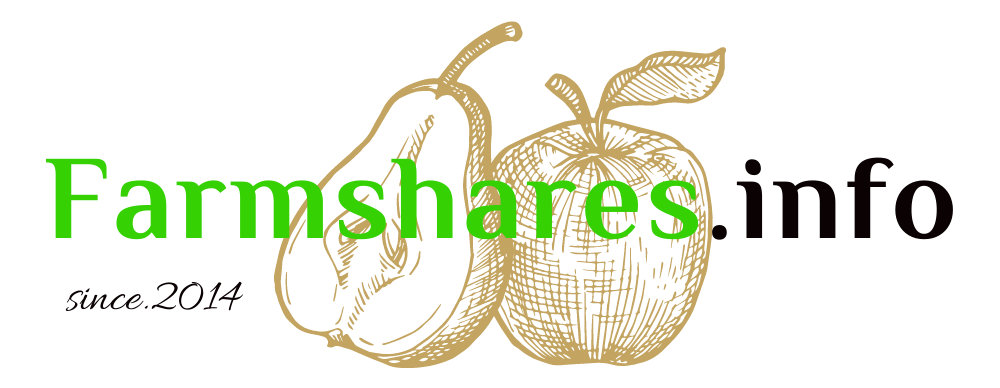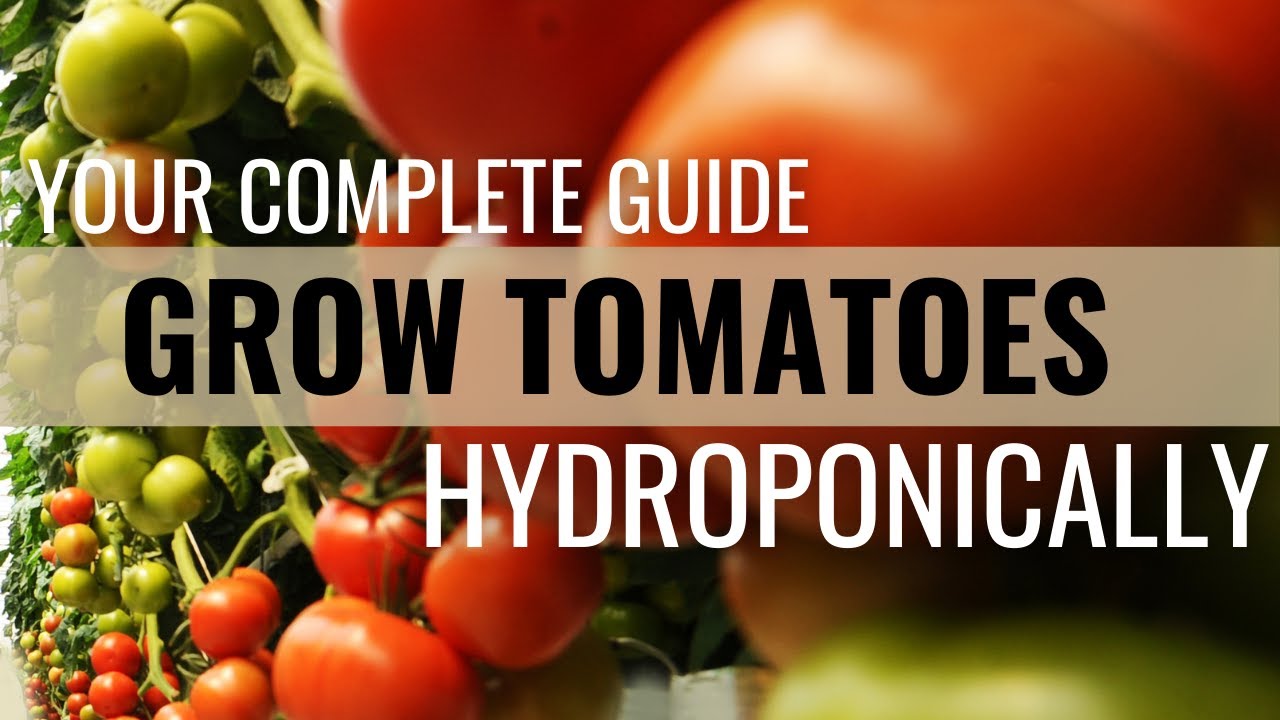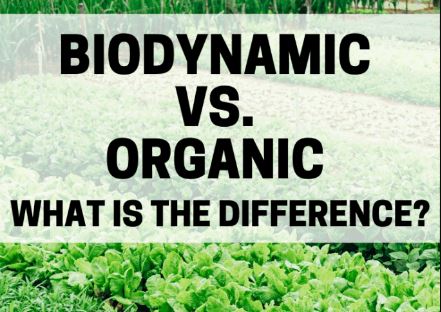
Welcome to the ultimate guide on the Biodynamic Farming vs. Organic. As consumers become more conscious about the food they consume, the demand for sustainable and eco-friendly agricultural practices has skyrocketed. Both biodynamic and organic farming offer alternatives to conventional methods, but what sets them apart? In this comprehensive guide, we’ll delve into the principles, practices, and benefits of biodynamic farming, exploring its similarities and differences to organic farming along the way. From understanding the cosmic forces that shape biodynamic agriculture to examining the certification processes, we’ll leave no stone unturned. Whether you’re a curious consumer, an aspiring farmer, or a sustainability enthusiast, this guide will provide you with the knowledge and insights you need to make informed decisions about the food you consume and the farming practices you support. So, let’s embark on this enlightening journey together and unlock the secrets of biodynamic farming versus organic farming.
What is biodynamic farming?
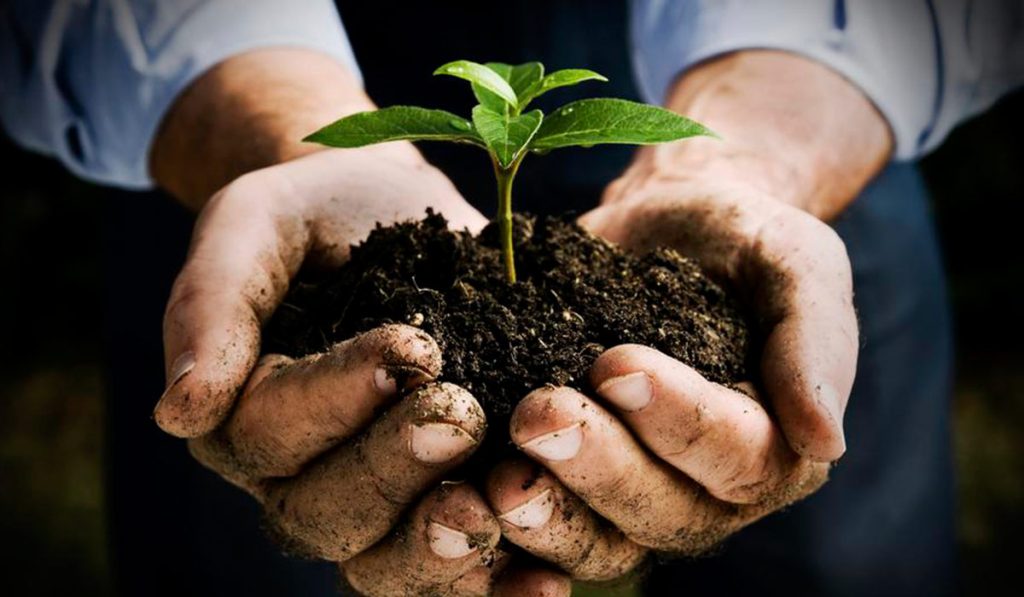
Biodynamic farming, often referred to as “beyond organic,” is a holistic approach to agriculture that considers the farm as a self-sustaining ecosystem. Developed in the early 20th century by Austrian philosopher Rudolf Steiner, biodynamic farming encompasses not only the physical aspects of farming but also the spiritual and cosmic forces that influence the growth of plants and the well-being of animals. At its core, biodynamic farming aims to harmonize the relationship between the soil, plants, animals, and the surrounding environment. This is achieved through the use of specific preparations made from natural substances, such as herbs, minerals, and animal manure, which are applied in precise quantities and at specific times according to the lunar and cosmic cycles. By following these practices, biodynamic farmers strive to enhance the vitality and health of their crops, while also promoting biodiversity and ecological balance on their farms.
Biodynamic farming goes beyond the absence of synthetic pesticides and fertilizers, focusing on regenerative practices that build and maintain soil fertility. It encourages the integration of livestock and crop rotations to optimize nutrient cycling and minimize external inputs. Additionally, biodynamic farmers pay close attention to the overall well-being of their animals, providing them with a natural and stress-free environment. This holistic approach to farming creates a deep connection between the farmer, the land, and the food produced, resulting in a more sustainable and spiritually fulfilling farming system.
The following points could be added for a more detailed overview:
- The Nine Biodynamic Preparations: Biodynamic farming uses nine specific preparations, numbered 500-508, made from cow manure, quartz and seven medicinal plants: yarrow, chamomile, stinging nettle, oak bark, dandelion, valerian, and horsetail. These preparations are used in homeopathic quantities and are thought to stimulate soil life, improve plant health and vitality, and enhance the quality of the farm’s compost.
- Consideration of Astrological Calendars: In addition to the lunar cycle, biodynamic farmers also plan their sowing, cultivating, and harvesting schedules based on astrological calendars. They believe that the celestial bodies (moon, planets, and stars) can influence plant growth and development.
- Focus on Self-Sufficiency: Biodynamic farms strive to be as self-sufficient as possible. This means growing a diversity of crops and rearing a variety of animals to produce most of the food and materials needed on the farm. External inputs are minimized, and waste outputs are recycled back into the farm system as much as possible.
- Emphasis on Soil Health: Biodynamic farming places a strong emphasis on the health and vitality of the soil. The quality of the soil is seen as a critical factor in the health of the plants, animals, and humans that rely on it.
- Connection with the Local Community: Many biodynamic farms also strive to strengthen their connection with the local community. This can be done through farm-to-table programs, community-supported agriculture (CSA) schemes, educational workshops, and other outreach activities.
What is organic farming?
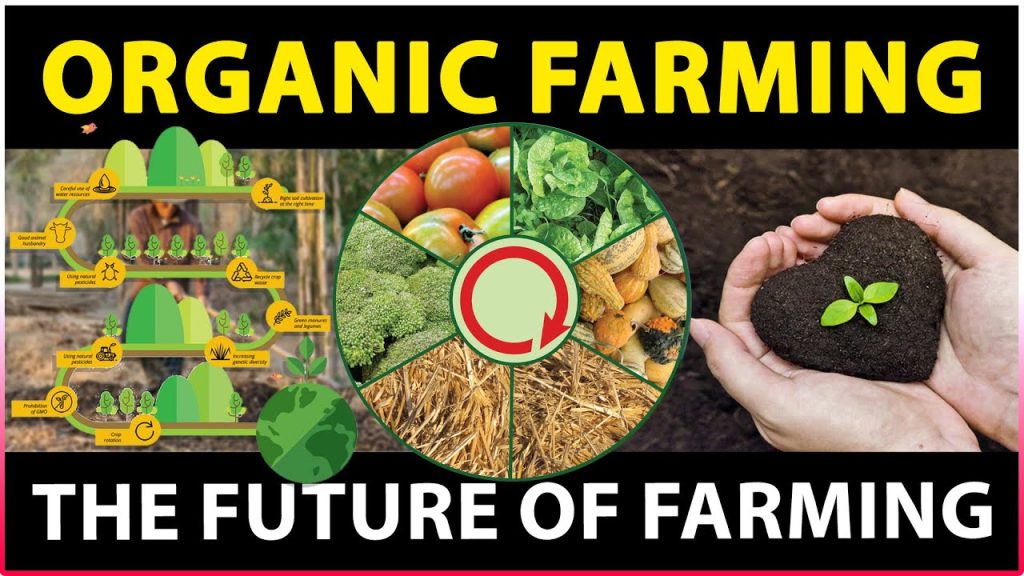
Organic farming, on the other hand, is an agricultural system that aims to produce food using methods that prioritize environmental sustainability, animal welfare, and the avoidance of synthetic inputs. It involves the use of natural fertilizers, such as compost and manure, and the exclusion of synthetic pesticides and genetically modified organisms (GMOs). Organic farming relies on practices that promote soil health, such as crop rotation, cover cropping, and the use of beneficial insects for pest control. By prioritizing biodiversity and natural processes, organic farmers aim to create a balanced and resilient ecosystem that can sustainably produce high-quality food.
Organic farming has gained significant popularity in recent years, with consumers increasingly seeking out organic products due to health and environmental concerns. Organic certification is regulated by various organizations worldwide, ensuring that farmers meet specific standards and undergo regular inspections to maintain their organic status. While organic farming shares similarities with biodynamic farming, it differs in its approach to cosmic and spiritual influences, as well as the specific preparations and practices utilized.
Here is a few points to provide a more complete picture:
- Focus on Biodiversity: Organic farming places significant emphasis on biodiversity not only to increase the biological activity of the soil but also to promote a balanced ecosystem. This includes growing a diverse range of crops and rearing different types of livestock, which helps reduce disease pressure and improves the resilience of the farming system.
- Water Management: Organic farmers use techniques such as mulching and crop rotation to maintain soil moisture and reduce water use. They also strive to keep water bodies clean by minimizing soil erosion and runoff, which can carry pollutants from the farm into nearby water sources.
- Animal Welfare: Organic standards place a high emphasis on animal welfare. Livestock must be given organic feed and access to open-air, and the use of antibiotics and growth hormones is strictly prohibited.
- Carbon Sequestration: Organic farming practices such as the use of cover crops and compost, and reduced tillage, can help sequester carbon in the soil. This not only improves soil fertility but also helps mitigate climate change by reducing greenhouse gas emissions.
- Socio-economic Aspect: Organic farming also considers the social and economic well-being of farmers and rural communities. It promotes fair wages and good working conditions for farm workers, and encourages direct sales and short supply chains to help farmers receive a fair price for their produce.
In conclusion, organic farming is a comprehensive approach to sustainable agriculture that considers the environmental, animal welfare, and socio-economic aspects of farming. It offers a viable alternative to conventional farming by working with nature to produce food in a sustainable and ethical way.
The differences between biodynamic and organic farming
Here is a basic comparison table that outlines some key differences and similarities between Biodynamic farming and Organic farming:
| Factor | Biodynamic Farming | Organic Farming |
|---|---|---|
| Definition | A holistic and regenerative farming system that views the farm as a self-sustaining organism. | A method of farming that avoids synthetic pesticides and fertilizers, and promotes environmental sustainability. |
| Origin | Developed by Rudolf Steiner in the 1920s. | Evolved as a reaction to the industrialization of agriculture post World War II. |
| Certification | Demeter International oversees biodynamic certification worldwide. | Multiple organizations globally, such as the USDA (United States) and EU Organic (Europe). |
| Synthetic chemicals | Strictly prohibited. | Mostly prohibited, with few exceptions allowed under specific circumstances. |
| Farm as an ecosystem | Central to the approach – farms are viewed as a holistic, self-sustaining organism. | Considered, but less emphasis on the farm as a holistic organism. |
| Biodiversity | Biodiversity is highly encouraged and a key component. | Biodiversity is encouraged, but there is less emphasis compared to biodynamic farming. |
| Animal welfare | Animals are integral to the farm ecosystem and their welfare is highly prioritized. | Animal welfare standards must be met, but animals are not required to be part of the farming system. |
| Soil Health | Vital – biodynamic farming includes specific preparations and practices to enhance soil vitality. | Important – organic farming encourages practices that maintain and improve soil health. |
| Spiritual/Esoteric element | Biodynamic farming includes some esoteric elements, like planting in accordance with lunar cycles. | Typically, no spiritual or esoteric elements are included. |
| Genetically modified organisms (GMOs) | Strictly prohibited. | Strictly prohibited. |
| Use of compost and manure | Specific biodynamic composting methods and preparations are used. | Use of compost and manure is encouraged, but there are no specific requirements for preparations. |
| Crop rotation | Required and carefully planned to maintain soil health and farm vitality. | Encouraged and often required for soil health and pest management, but not as strict as in biodynamic farming. |
While both biodynamic and organic farming share the goal of sustainable and eco-friendly agriculture, there are several key differences between the two approaches. Biodynamic farming incorporates a spiritual and cosmic perspective, taking into account the influences of the moon, stars, and planetary movements on the vitality and growth of plants. This cosmic perspective sets biodynamic farming apart from organic farming, which focuses primarily on ecological principles and avoiding synthetic inputs.
Another significant difference lies in the specific preparations used in biodynamic farming. Biodynamic farmers create and apply a series of preparations derived from natural substances, such as herbs, minerals, and animal manure, to enhance soil fertility and stimulate plant growth. These preparations are made through unique processes, such as fermenting them in animal organs or burying them in cow horns, which are then applied to the soil or plants at specific times according to the biodynamic calendar. In contrast, organic farming relies on compost, manure, and other natural fertilizers to nourish the soil and promote plant health.
Additionally, biodynamic farming emphasizes biodiversity and the integration of livestock in a farm’s ecosystem. Biodynamic farmers often raise animals on their farms, allowing for a more balanced nutrient cycle and the use of animal manure as a natural fertilizer. Organic farming, while also promoting biodiversity, does not require the integration of livestock and allows for a wider range of practices as long as they adhere to organic standards.
Another key difference that might be worth noting is the nature of the certification processes for these two types of farming.
While both types of farming require certification, the processes and the standards that must be met vary:
- Certification Standards: Biodynamic certification goes beyond organic certification in its requirements. It not only restricts the use of synthetic pesticides and fertilizers but also requires adherence to the specific farming practices outlined in Rudolf Steiner’s agricultural lectures, including the use of biodynamic preparations and following the biodynamic planting calendar. Organic certification, on the other hand, primarily focuses on prohibiting synthetic inputs and promoting ecological sustainability.
- Holistic Approach: Biodynamic farming considers the farm as a whole, interconnected organism and encourages self-sustainability within the farm system. This means that ideally, everything needed for the farm should be produced within the farm itself. While organic farming encourages ecological balance and sustainability, it doesn’t necessitate this level of integration and self-reliance.
- Treatment of Animals: Both systems prioritize animal welfare, but biodynamic standards are generally more stringent. For instance, in biodynamic farming, a certain proportion of the feed for livestock must come from the same farm where the animals are raised, promoting a closed-loop system.
In essence, while both organic and biodynamic farming aim for sustainable and ecological practices, biodynamic farming can be seen as a step further due to its spiritual and holistic approach, stricter standards, and the level of self-sufficiency it encourages.
Biodynamic farming principles and practices
Biodynamic farming is guided by a set of principles that go beyond organic practices. These principles include viewing the farm as a self-contained organism, promoting biodiversity, managing the farm holistically, and recognizing the influences of cosmic and spiritual forces. Biodynamic farmers strive to create a closed-loop system by producing their inputs on-site, such as compost, animal feed, and herbal preparations. They also implement crop rotations, cover cropping, and companion planting to enhance soil fertility and pest control.
In addition to these principles, biodynamic farmers follow specific practices to enhance the cosmic and spiritual aspects of their farming. For example, they consider the lunar and cosmic cycles when planning sowing, cultivating, and harvesting activities. Biodynamic farmers also prepare and apply biodynamic preparations, such as the horn manure (preparation 500) and horn silica (preparation 501), which are believed to stimulate soil fertility and plant growth. These preparations are made through unique processes that involve burying them in cow horns or fermenting them in animal organs.
There is a few more details:
- Observing Cosmic Rhythms: Biodynamic farmers use the astronomical calendar to determine the best times to plant, cultivate, and harvest. This approach is rooted in the belief that the cosmic rhythms have a direct influence on plant growth and development. The biodynamic planting calendar divides plants into four categories: root (beets, onions), leaf (lettuce, spinach), fruit (tomatoes, cucumbers), and flower (broccoli, cauliflower). Each category is associated with a particular element (Earth, Water, Fire, and Air) and has specific favorable days for planting and cultivation.
- Biodynamic Composting: Composting is another fundamental practice in biodynamic farming. Farmers add specific preparations (502-507), made from yarrow, chamomile, stinging nettle, oak bark, dandelion, and valerian, to the compost piles. These preparations are intended to stimulate decomposition and enhance the nutrient value of the compost.
- Field Sprays and Homeopathic Preparations: Apart from the horn manure and horn silica, other preparations are used as field sprays to control pests and diseases and to invigorate the life forces in the farm ecosystem.
- Animal Integration: Animals are a vital part of a biodynamic farm. They contribute to the farm’s vitality through manure production and the generation of other materials used in preparations. The farmers provide humane and respectful treatment to the animals, ensuring they express their natural behaviors.
- Biodiversity: Biodynamic farms are often teeming with life, with a variety of crops, animals, and wild plants. Biodiversity is seen as a sign of a healthy, balanced farm, and it also promotes resilience.
These practices work together to create a resilient farming system that promotes soil health, crop vitality, and ecological balance.
Organic farming principles and practices
Organic farming is based on a set of principles that prioritize environmental sustainability, animal welfare, and the avoidance of synthetic inputs. These principles include maintaining soil health through practices like crop rotation, cover cropping, and the use of natural fertilizers. Organic farmers also prioritize biodiversity and natural pest control, often using beneficial insects and biological controls instead of synthetic pesticides.
To meet organic standards, farmers must adhere to strict regulations regarding the use of synthetic pesticides and fertilizers. Instead, they rely on organic-approved inputs, such as compost, manure, and naturally derived pest control products. Organic farmers are also required to maintain detailed records of their farming practices and undergo regular inspections to maintain their organic certification.
Let’s delve into some of the key practices in more detail:
- Soil Management: One of the foundations of organic farming is the promotion of soil health. This involves practices like composting, mulching, and green manuring to enrich the soil with organic matter, which helps in improving soil structure, moisture retention, and nutrient availability. Crop rotation and intercropping are also used to break pest and disease cycles and to promote nutrient cycling.
- Pest and Disease Management: Organic farmers use a range of techniques to manage pests and diseases without resorting to synthetic pesticides. These include the use of beneficial insects, trap crops, and biological control agents. Physical barriers, like nets and row covers, may also be used. Organic farmers often select plant varieties that are resistant to local pests and diseases.
- Weed Management: Weeds are managed through mechanical methods like hand weeding, hoeing, or using machinery. Mulching is also used to suppress weed growth. Organic farmers also employ preventive measures like crop rotation and planting cover crops to outcompete weeds.
- Livestock Management: Animals on organic farms are treated with high welfare standards. They are usually raised in free-range or pasture-based systems, where they can express their natural behaviors. The use of antibiotics and hormones is strictly controlled.
- Biodiversity Conservation: Organic farms are encouraged to maintain and enhance biodiversity. This could include maintaining hedgerows and other habitats for wildlife, incorporating a diverse mix of crops, or preserving traditional and heirloom crop varieties.
- Water Management: Organic farmers use water efficiently and strive to minimize water pollution. This can be achieved through techniques like drip irrigation, mulching to reduce evaporation, and maintaining riparian buffer strips to protect waterways.
It’s also important to note that organic standards vary by country and certifying body, but they generally adhere to these core principles. Certified organic farmers undergo regular inspections and audits to ensure they are complying with organic standards.
Benefits of biodynamic farming
Biodynamic farming offers several benefits that go beyond the scope of organic farming. By incorporating spiritual and cosmic influences, biodynamic farmers believe that they can enhance the vitality, flavor, and nutritional content of their crops. This holistic approach also promotes a deep connection between the farmer, the land, and the food, resulting in a more meaningful and fulfilling farming experience.
Additionally, biodynamic farming aims to create a self-sustaining ecosystem that minimizes external inputs and fosters biodiversity. The integration of livestock helps to close nutrient cycles and reduce the need for external fertilizers. By nurturing the health of the soil and promoting ecological balance, biodynamic farming can lead to improved soil fertility, increased crop resilience, and reduced environmental impact.
Here are some more specific benefits of biodynamic farming:
- Environmental Sustainability: Biodynamic farming practices contribute to environmental sustainability by promoting biodiversity, reducing external inputs, and promoting healthy soil practices. The ecosystem approach not only improves soil fertility but also enhances ecosystem resilience, helping to mitigate the impacts of climate change.
- Resilient Crops: By taking a holistic approach to farming, biodynamic practices can create more robust and resilient crops. These crops are often more resistant to diseases and pests, reducing the need for external inputs like synthetic pesticides and fertilizers.
- Quality of Produce: Many proponents of biodynamic farming believe that the method produces fruits, vegetables, and grains of superior taste and nutritional quality. This is attributed to the health of the soil and the holistic cultivation methods used.
- Animal Welfare: Biodynamic farms often integrate livestock into their farming systems, providing a natural and stress-free environment for the animals. The animals are treated as an integral part of the farm ecosystem, contributing to nutrient cycling and overall farm health.
- Economic Sustainability: Although biodynamic farming requires a significant amount of time and labor, it can provide economic benefits in the long run. By reducing reliance on external inputs and promoting farm resilience, biodynamic farmers may be able to better withstand market fluctuations and extreme weather events.
- Spiritual Fulfillment: For some farmers, the spiritual and cosmic elements of biodynamic farming provide a deeper connection to the land and their work. This aspect of biodynamic farming can provide a sense of purpose and fulfillment that goes beyond economic factors.
- Consumer Demand: There’s a growing market for biodynamically grown products as consumers are increasingly seeking out sustainably and ethically produced food. This trend can create new marketing opportunities for biodynamic farmers.
However, it’s also important to note that biodynamic farming may not be suitable or practical for all situations, and the benefits can vary depending on the specific context and how the practices are implemented.
Disadvantages of biodynamic farming
While biodynamic farming has numerous benefits, there are also several challenges and potential drawbacks to this approach:
- Complexity: The methods and preparations prescribed in biodynamic farming are quite complex and require a good understanding of the principles behind them. This can be time-consuming and may pose a barrier to farmers new to the practice.
- Reliance on Cosmic Cycles: Biodynamic farming takes into account lunar and planetary cycles, which can complicate the timing of planting, cultivating, and harvesting activities. While some farmers may find this connection to natural rhythms fulfilling, others may find it impractical or difficult to implement.
- Scale: The intensive management practices required in biodynamic farming, such as the production of specific preparations and the integration of livestock, may be challenging to implement on a large scale.
- Certification Costs and Requirements: Obtaining biodynamic certification can be costly and involves satisfying a comprehensive set of criteria that goes beyond what’s required for organic certification. Maintaining this certification requires ongoing compliance and periodic inspections.
- Market Recognition: While the demand for biodynamic products is growing, it is still less widely recognized and understood by consumers compared to organic produce. This could potentially limit the market opportunities for biodynamic farmers.
- Scientific Validation: There is ongoing debate within the agricultural and scientific communities about the efficacy of some biodynamic practices. While some studies suggest benefits to soil health and crop quality, others find no significant difference between biodynamic and other organic methods.
Overall, while biodynamic farming can provide environmental and qualitative benefits, it requires a substantial commitment of time, understanding, and resources that may not be feasible or attractive for all farmers.
Benefits of organic farming
Organic farming offers a range of benefits that align with consumer demand for sustainable and eco-friendly agriculture. By avoiding synthetic pesticides and fertilizers, organic farming reduces the risk of chemical residues in food and minimizes environmental pollution. Organic farming practices that prioritize soil health, biodiversity, and natural processes can lead to improved soil fertility and water retention, increased carbon sequestration, and enhanced ecosystem resilience.
Consumers who choose organic products also contribute to the well-being of animals, as organic farming requires high animal welfare standards. Organic livestock are raised without the use of growth hormones and have access to outdoor spaces for grazing and exercise. These animal welfare practices resonate with consumers who prioritize ethical and humane treatment of animals.
- Healthier Foods: Organic farming avoids the use of synthetic pesticides and fertilizers, reducing the risk of harmful chemical residues in your food. This makes organic produce a healthier choice for consumers.
- Environmental Impact: Organic farming promotes biodiversity, reduces the use of non-renewable resources, and helps to maintain ecosystems and wildlife habitats. By practicing crop rotation and other organic farming techniques, farmers can prevent soil erosion and enhance soil fertility.
- Animal Welfare: Organic farming methods ensure that animals are raised in living conditions that accommodate their natural behavior. This means they have access to outdoors, fresh air, water, sunshine, and are fed 100% organic feed.
- Sustainability: Organic farming aims at sustainable agriculture, meaning farms are managed in a way that the soil stays fertile and valuable for future generations.
- Economic Benefits: Organic farming can also provide economic benefits for farmers. Because organic food is often sold at a premium price, farmers can earn more for their produce. Additionally, by reducing reliance on purchased synthetic inputs, organic farmers may be able to improve their profit margins in the long term.
- Consumer Demand: There is a growing consumer demand for organic produce. People are becoming more conscious of their health and the environment, driving demand for organic food, and providing opportunities for organic farmers.
- Mitigation of Climate Change: Organic farming can help mitigate climate change by capturing atmospheric carbon dioxide and storing it in the soil. This process, known as carbon sequestration, helps to reduce overall greenhouse gas emissions.
Again, it’s important to note that the benefits of organic farming can depend on the specific practices used and the local context. While organic farming offers many potential benefits, it can also present challenges, such as higher labor costs and the risk of lower yields, especially in the initial transition period.
Disadvantages of organic farming
Organic farming also comes with its own set of challenges and potential drawbacks:
- Lower Yields: Studies have shown that organic farming methods generally yield less than conventional farming methods, primarily due to the prohibition of synthetic fertilizers and pesticides. This could potentially lead to higher food prices or a need for more land to meet the same level of production.
- Labor-Intensive: Organic farming typically requires more manual labor than conventional farming, in part because farmers must physically remove weeds or use natural methods for pest control.
- Transition Period: Farmers who switch from conventional farming to organic farming face a transition period of several years during which they must follow organic farming methods but cannot sell their produce as organic. This can be financially challenging.
- Certification Costs and Requirements: Obtaining and maintaining organic certification can be costly and time-consuming. Regular inspections are required, and farmers must keep detailed records of their farming practices.
- Risk of Contamination: Despite a farmer’s best efforts, organic crops can be contaminated by synthetic pesticides from neighboring non-organic farms, from contaminated water sources, or even from airborne particles. This is a challenge that organic farmers have little control over.
- Variability in Standards: The definition and enforcement of organic standards can vary significantly from one country or certifying body to another, leading to inconsistencies in what ‘organic’ means.
While organic farming has many benefits in terms of sustainability and reducing chemical use, it’s important to consider these challenges and drawbacks when deciding on the most suitable farming approach.
Biodynamic vs. organic certification
Both biodynamic and organic farming have certification processes to ensure that farmers meet specific standards. Biodynamic certification is typically provided by organizations such as Demeter International, which follow rigorous guidelines that encompass both the ecological and spiritual aspects of biodynamic farming. Inspections are carried out to verify compliance with these standards, including the proper use of biodynamic preparations and adherence to the lunar and cosmic cycles.
Organic certification is regulated by various organizations worldwide, such as the U.S. Department of Agriculture (USDA) and the European Union’s organic regulations. Organic farmers must meet specific criteria regarding the use of synthetic inputs, crop rotations, and animal welfare. Regular inspections are conducted to ensure compliance with these standards, and certified organic farmers are required to maintain detailed records of their farming practices.
Here’s a deeper comparison between biodynamic and organic certification:
- Scope:
- Biodynamic: The biodynamic certification encompasses the entire farm system, implying that the entire farm, not just a certain crop, needs to adhere to biodynamic principles. The focus is on maintaining a balanced ecosystem, considering both the tangible (soil, crops, animals) and intangible (cosmic rhythms, spiritual forces) aspects.
- Organic: Organic certification primarily focuses on prohibiting synthetic chemicals, GMOs, and irradiation. The holistic nature of the farm isn’t necessarily the focus, rather the emphasis is on environmentally-friendly farming practices.
- Specific Practices:
- Biodynamic: Certification mandates the use of eight specific preparations made from herbs, minerals, and animal manures. These are believed to harness cosmic forces and invigorate the soil and plants. Biodynamic farms also need to maintain a certain level of biodiversity within the farm.
- Organic: The focus is on soil health, crop rotation, and the prohibition of synthetic chemicals and genetically modified organisms (GMOs). The use of natural predators for pest control and organic-approved fertilizers is encouraged.
- Livestock Treatment:
- Biodynamic: Livestock are an integral part of the farm organism. There are stringent guidelines on their treatment, including specific provisions for housing, grazing, breeding, and feeding.
- Organic: Organic certification also has guidelines for livestock to ensure humane treatment and the prohibition of antibiotics and hormones. However, the integration of livestock into the farm ecosystem is not as central as in biodynamic farming.
- Land Management:
- Biodynamic: A portion of the farmland (usually a minimum of 10%) must be set aside for biodiversity, such as forests, wetlands, or insectaries.
- Organic: While biodiversity is encouraged, there’s no specific requirement for land to be set aside.
- Duration and Transition:
- Biodynamic: There’s typically a transition period for a farm to become fully biodynamic certified, which can take several years. This allows the land to rejuvenate and for synthetic residues to dissipate.
- Organic: Similar to biodynamic farming, there’s a transition period (often 3 years) where the land is not treated with prohibited substances before it can be certified organic.
In conclusion, while both biodynamic and organic certifications advocate for sustainable and eco-friendly agriculture, biodynamic certification delves deeper into the spiritual and cosmic connection, aiming for a harmonious balance in the farm ecosystem. Organic certification, on the other hand, places a strong emphasis on avoiding harmful chemicals and promoting environmentally friendly practices. Both certifications are rigorous, and farms undergo regular inspections to ensure compliance with their respective standards.
Case studies: Successful biodynamic farms
Several biodynamic farms around the world have achieved remarkable success by implementing biodynamic principles and practices. One such example is the Sekem Farm in Egypt, which has transformed desert land into a thriving agricultural oasis using biodynamic methods. Through the integration of livestock, composting, and biodynamic preparations, the Sekem Farm has restored soil fertility, increased crop yields, and created employment opportunities for local communities.
Another inspiring case study is the Weleda farm in Germany, which produces medicinal plants and herbal extracts using biodynamic methods. The farm’s commitment to biodynamic practices has resulted in high-quality products that meet the stringent standards of the pharmaceutical industry. Weleda’s success showcases the potential of biodynamic farming to produce specialty crops with exceptional quality and market demand.
Case studies: Successful organic farms
Organic farming has also seen numerous success stories worldwide. One notable example is Polyface Farm in the United States, known for its regenerative and holistic approach to farming. Polyface Farm prioritizes soil health through rotational grazing, cover cropping, and composting, resulting in nutrient-rich pastures and healthy livestock. This approach has gained recognition for its ability to restore degraded land and produce high-quality organic meat and poultry products.
In India, the Sikkim Organic Mission has transformed the entire state of Sikkim into a certified organic region. By implementing organic farming practices and providing support to farmers, Sikkim has become a model for organic agriculture on a large scale. The mission has not only improved the livelihoods of farmers but also preserved the state’s biodiversity and reduced environmental pollution.
Biodynamic farming vs. organic: Which is better?
The question of whether biodynamic farming or organic farming is better ultimately depends on individual perspectives and specific farming contexts. Both approaches offer sustainable and eco-friendly alternatives to conventional farming, with their own unique principles and practices. Biodynamic farming encompasses a broader spiritual and cosmic perspective, while organic farming focuses primarily on ecological principles and the avoidance of synthetic inputs.
Biodynamic farming’s emphasis on cosmic and spiritual influences may resonate with those seeking a deeper connection to nature and a more holistic approach to farming. The use of biodynamic preparations and the integration of livestock can also contribute to a more self-sustaining and biodiverse ecosystem. However, biodynamic farming requires a deeper understanding of cosmic rhythms and may be more challenging to implement on a large scale.
Organic farming, with its clear standards and regulations, provides a more accessible and widely recognized framework for sustainable agriculture. Its focus on soil health, biodiversity, and animal welfare has gained significant consumer support and market demand. Organic farming can be implemented on various scales, making it suitable for small-scale farmers as well as large commercial operations.
It’s essential to note that while both farming methods reject the use of synthetic chemicals and prioritize environmental sustainability, they offer different models of farming:
- Holism vs. Component-Based: Biodynamic farming views the farm as a unified organism that’s intimately connected with cosmic rhythms. This method is generally more holistic and spiritual in nature. On the other hand, organic farming, while still holistic to an extent, tends to look at farming components such as soil health, pest management, and animal welfare.
- Biodiversity: Both farming methods encourage biodiversity, but biodynamic farming requires that a portion of the farm is dedicated to biodiversity, thus ensuring the presence of varied ecosystems on the farm.
- Livestock Integration: In biodynamic farming, livestock is seen as a crucial part of the farming ecosystem, essential for providing manure and maintaining soil health. While organic farming encourages ethical animal treatment and the use of animal manure, it does not mandate the integration of livestock into the farming system.
- Preparation Use: Biodynamic farming is known for its unique preparations made from fermented manure, minerals, and herbs, which are used to enrich the soil and stimulate plant growth. Organic farming does not prescribe such specific preparations but encourages the use of organic-approved fertilizers and pesticides.
- Market Demand and Economic Viability: Organic farming, having gained widespread recognition and popularity among consumers, might present more market opportunities for farmers and be more economically viable. However, biodynamic products, while lesser-known, often fetch premium prices due to their perceived superior quality.
In conclusion, neither biodynamic nor organic farming is universally “better”—each offers unique approaches to sustainable agriculture. The decision should be based on the farmer’s beliefs, the farm’s specific circumstances, and the demands of the market in which the products will be sold.
Conclusion
In conclusion, biodynamic farming and organic farming are two alternative approaches to agriculture that prioritize sustainability, environmental stewardship, and animal welfare. While organic farming focuses primarily on ecological principles and the avoidance of synthetic inputs, biodynamic farming incorporates a broader spiritual and cosmic perspective. Biodynamic farming’s unique practices, such as the use of biodynamic preparations and the consideration of lunar and cosmic cycles, set it apart from organic farming.
Both biodynamic and organic farming offer a range of benefits, including improved soil fertility, reduced environmental impact, and high-quality food production. The choice between these two approaches ultimately depends on personal values, farming goals, and the specific context in which farming is practiced. By understanding the principles, practices, and certification processes of biodynamic and organic farming, consumers and farmers can make informed decisions about the food they consume and the farming practices they support. Whether you choose to embrace the cosmic forces of biodynamic farming or the ecological principles of organic farming, both paths lead to a more sustainable and conscious future in agriculture.
